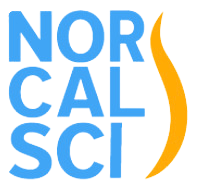Learn how to use "Electrical Stimulation for Pain Management and Hypersensitivity" at Jan. 23 virtual class
Over 60% of those with a spinal cord injury experience chronic pain, most resorting to medications in order to seek some relief with hit and miss results. On Sat., Jan. 23rd at 11 a.m. PST, we are thrilled to once again host Physical Therapist and truly an expert in the use of Electrical Stimulation, Jennifer Kapetanic, as part of our “NorCal SCI Presents: Virtual is the New Reality Series”. She will share her knowledge and experience on how the use of electrical stimulation can help with pain management using a TENS device that she considers as the best option. Register to attend this class HERE.
During this class, Jennifer will cover different types of pain experiences — Neuropathic and Musculoskeletal — and how to use electrical stimulation to treat these different types of pain. She will also review what to look for when buying a TENS unit.
This free virtual presentation is funded through a grant by the Reeve Foundation. Once you register, you will immediately receive a confirmation e-mail from us which you should keep for access information to the virtual event.
Jennifer has advanced certifications in Ekso skeleton and functional electrical stimulation use with hundreds of hours of clinical application across spinal cord and other neurological injury. She has 12 years of experience as a physical therapist. She received her doctorate in physical therapy from Chapman University in 2008. Her clinical skills have been developed across many areas of PT including acute care, cardiac rehabilitation, orthopedics and most recently spinal cord injury rehabilitation. For the last five years, she has been a part of the therapy team on the spinal cord injury rehabilitation unit at Santa Clara Valley Medical Center, one of the top SCI rehab hospitals in the U.S.

